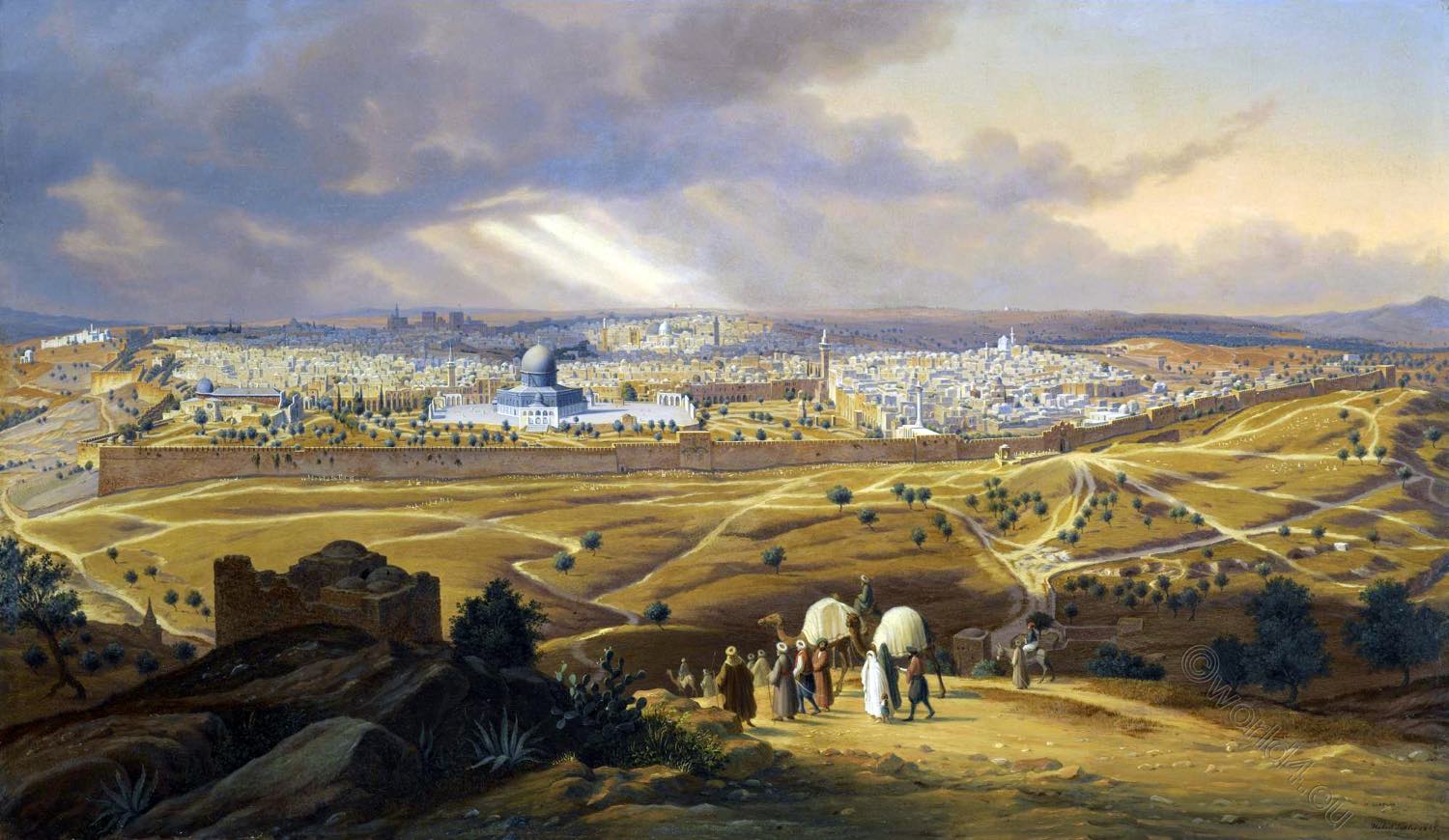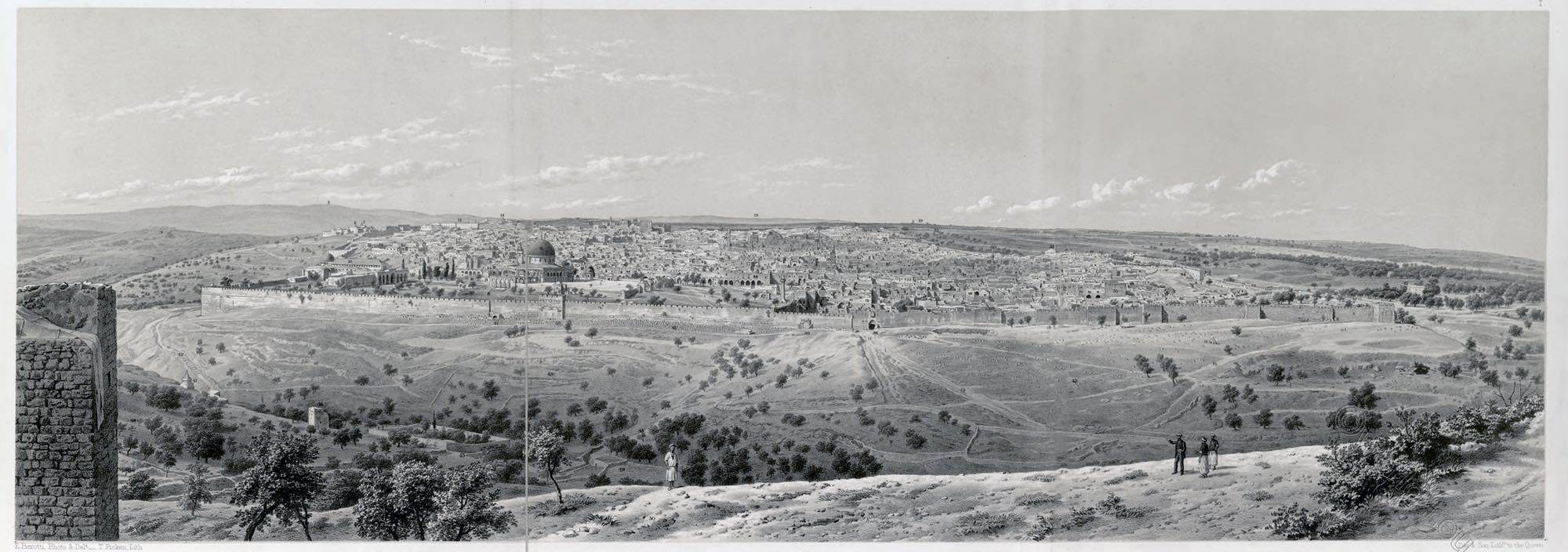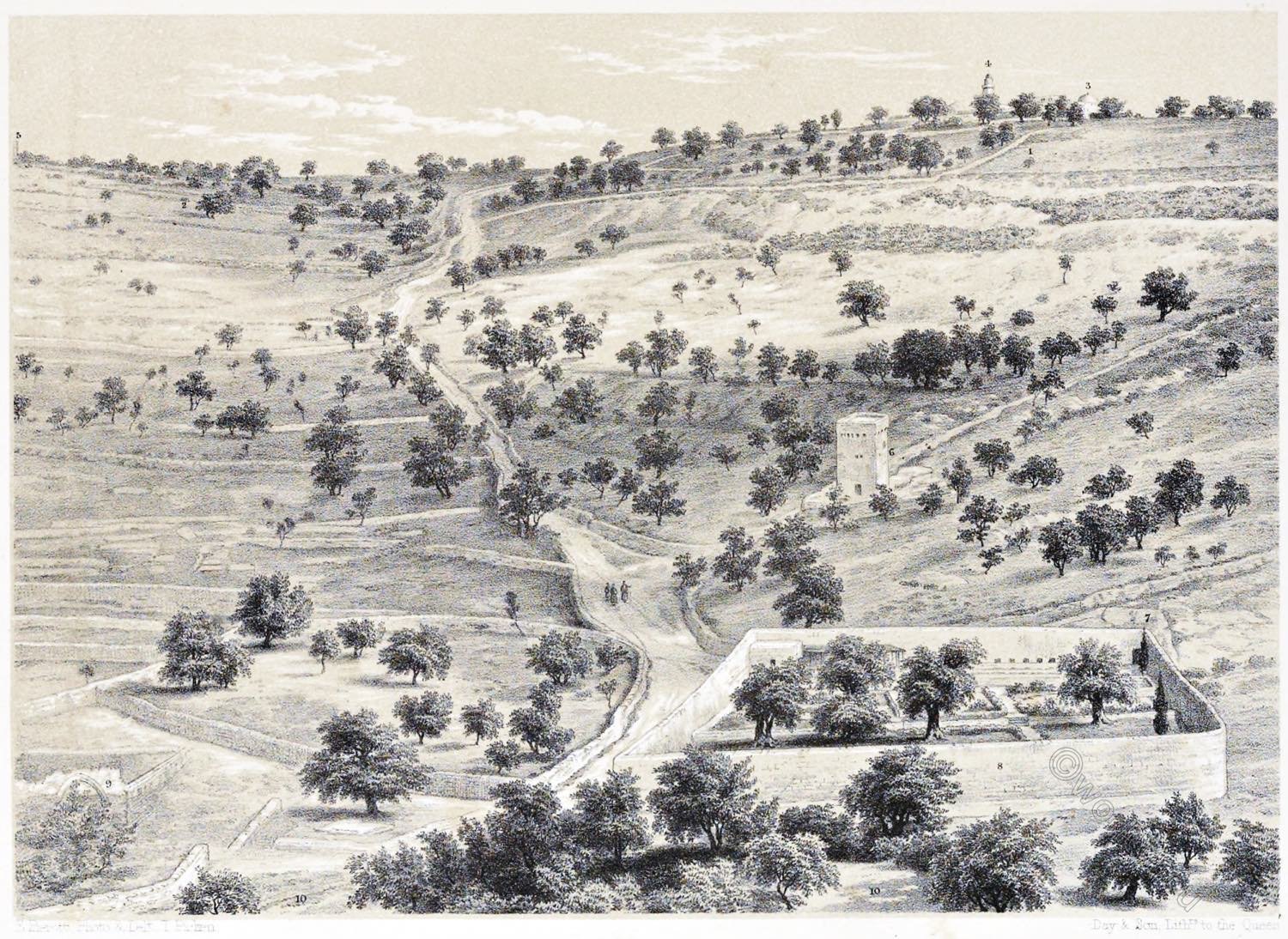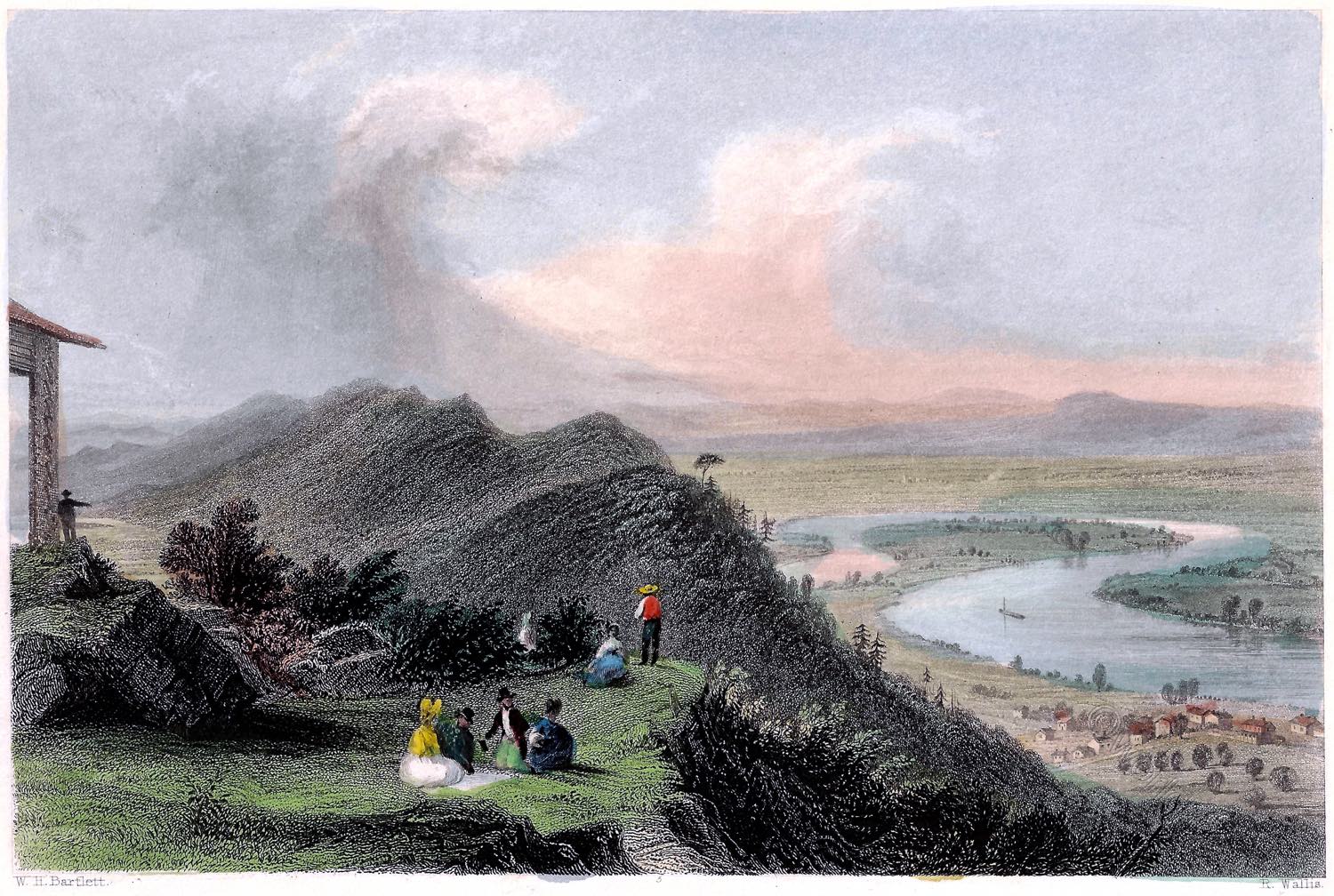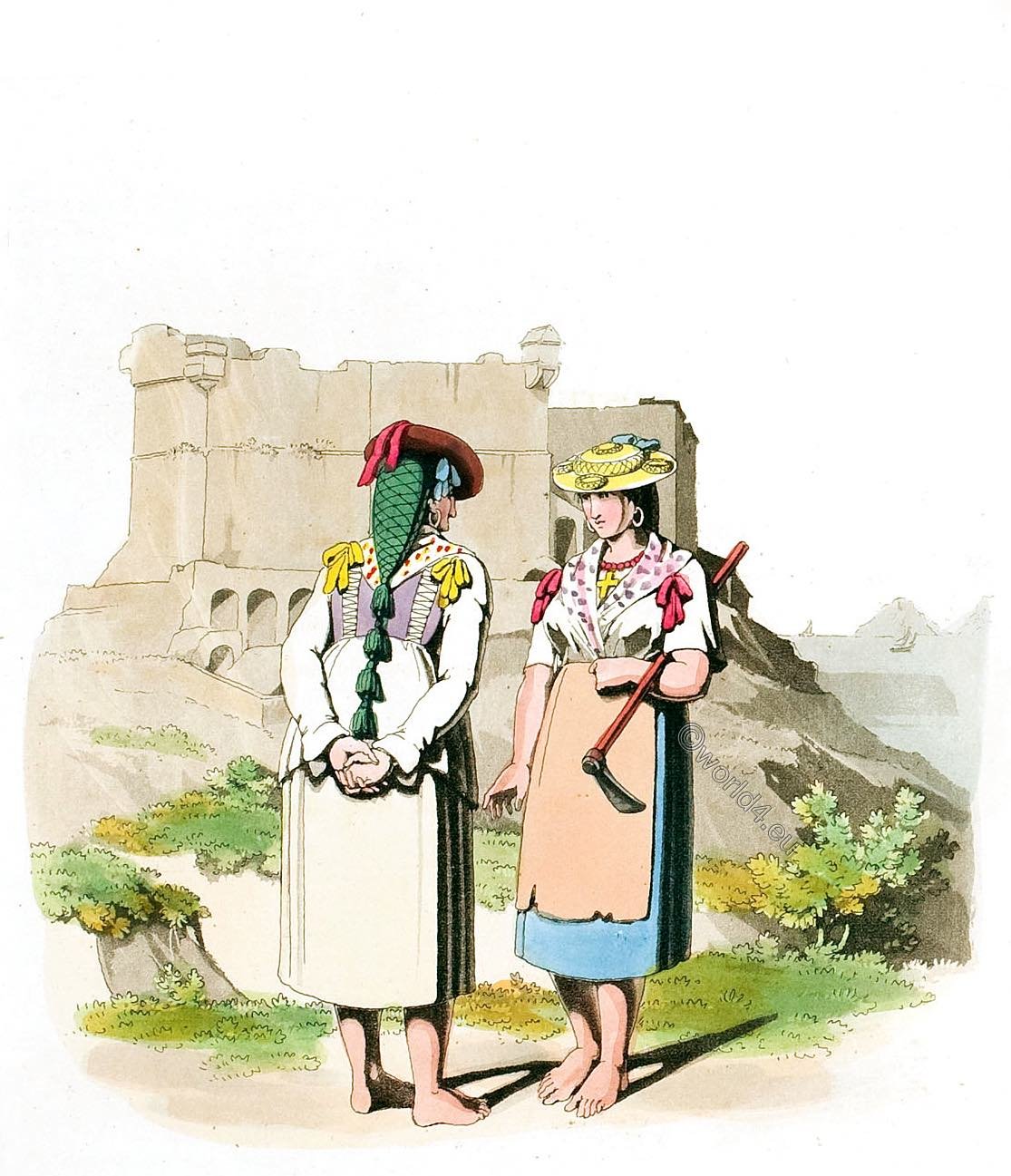Mount Parnassus is a 2455-metre-high mountain range in central Greece. Delphi is located at the south-western foot of the massif. It offers a picturesque panoramic view of olive groves. In Greek mythology, the mountain is dedicated to Apollo and is the home of the Muses, the goddesses of the arts. That is why Parnassus is figuratively regarded as the symbol and epitome of poetry and art. Especially until the 18th century, but also beyond, Parnassus as the seat of the god Apollo and the Muses was a frequently used subject of the visual arts and a symbol of art, music and literature.
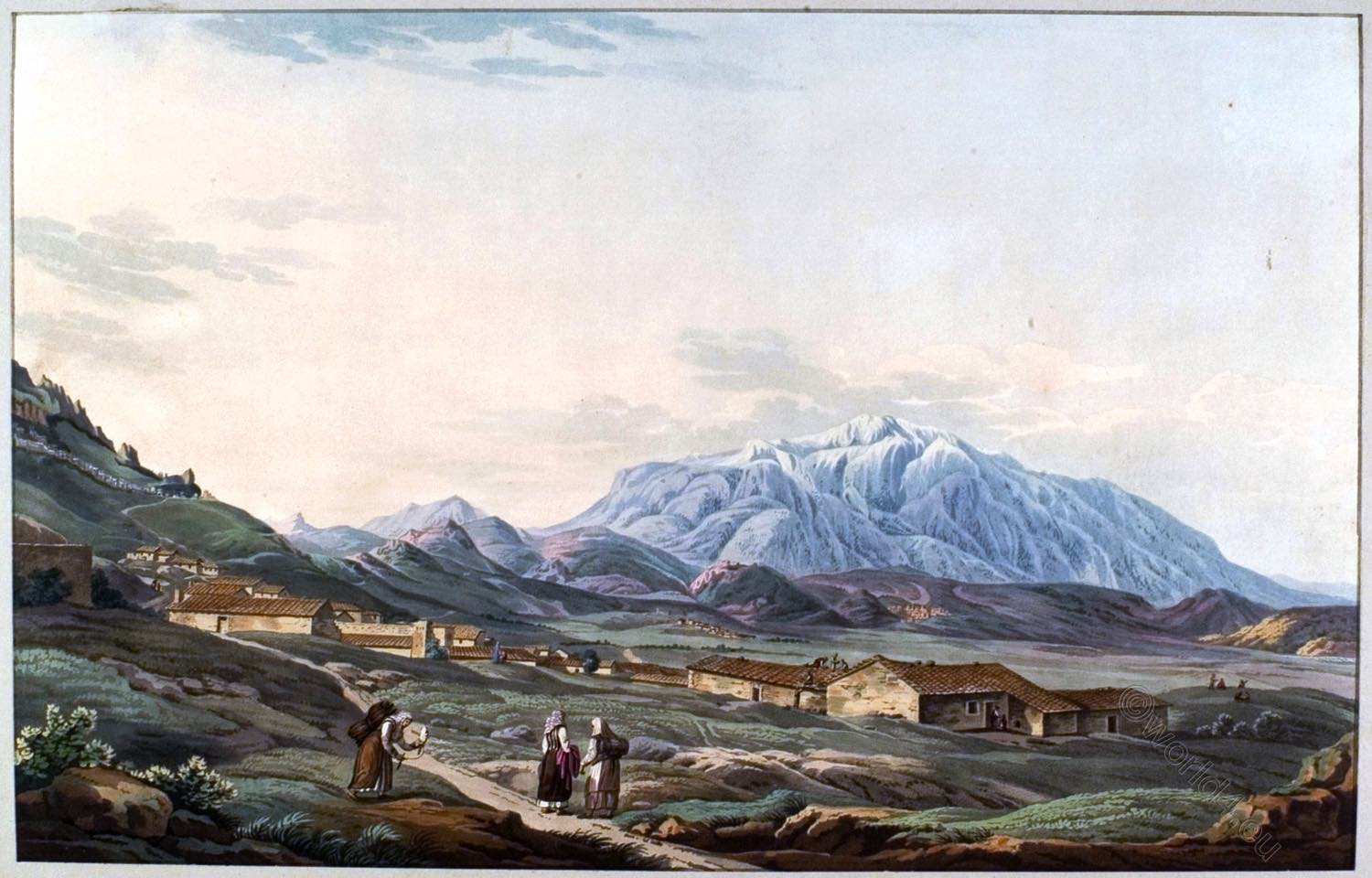
Montparnasse in Paris is named after Mount Parnassus.
PARNASSUS.
MOUNT Parnassus is seen to great advantage from this point below the village of Daulia. Its bleak and rugged sides are partially coveted with trees, while the more lofty summits are bristled with pines, and during the greater part of the year glitter with snow, from which the mountain is never entirely clear.
A very ancient name of Parnassus was Lykorcia; and a town upon it so called, is recorded to have been founded as early as the time of the deluge of Deucalion. The modern name of the mountain is Lyakoura; and a village, bearing the same appellation, and said to contain some vestiges of antiquity, still exists, three hours above Kastri. It is, however, rendered, by its bleak situation, uninhabitable during the winter months.
The roots of Parnassus to the leil rise into Mount Kirphis, now Limeno; upon which is the natural cave said to have been once inhabited by the monster called Lamia or Sybaris. Under the modem name of the Cave of Jerusalem, it is little worth the fatigue necessary to reach its difficult situation.
The nearest village is called Malta; the farthest is Daulia. The towering majesty of the back ground compensates little to the inhabitants of the latter, for the coldness it gives to the winter months. No olives grow in its neighborhood; little corn is reaped, or wine made, though some rice grounds exist at the foot of the mountain.
The town is placed upon the site of the ancient Daulis: many architectural fragments, as well as inscriptions, remain to attest the fact: but it was, however, never well inhabited. The Acropolis is more to the left, upon an oblong rock. It was defended by a wall, and projecting square towers placed upon the edge of the precipitous rock, and is noticed as a stronghold by the historian Livy. One entrance only existed, and that towards Parnassus. As the fortress was taken and burnt by Xerxes, and again destroyed in the third Sacred War, the masonry of its walls is necessarily of a late style.
Source: Views in Greece. Drawings by Edward Dodwell. Rod Well and Martin, London, 1821.
Continuing
Discover more from World4 Costume Culture History
Subscribe to get the latest posts sent to your email.

